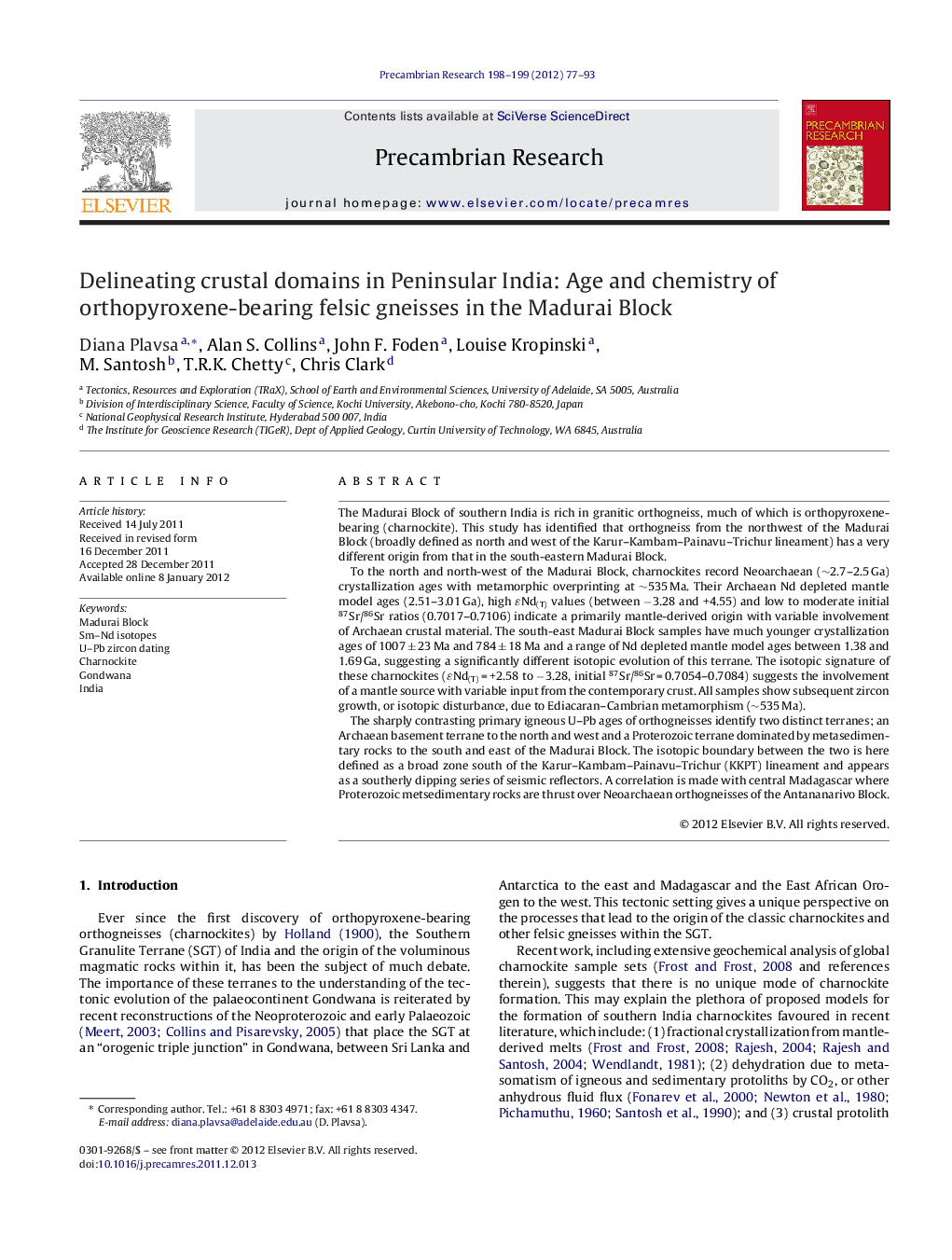| Article ID | Journal | Published Year | Pages | File Type |
|---|---|---|---|---|
| 4723648 | Precambrian Research | 2012 | 17 Pages |
The Madurai Block of southern India is rich in granitic orthogneiss, much of which is orthopyroxene-bearing (charnockite). This study has identified that orthogneiss from the northwest of the Madurai Block (broadly defined as north and west of the Karur–Kambam–Painavu–Trichur lineament) has a very different origin from that in the south-eastern Madurai Block.To the north and north-west of the Madurai Block, charnockites record Neoarchaean (∼2.7–2.5 Ga) crystallization ages with metamorphic overprinting at ∼535 Ma. Their Archaean Nd depleted mantle model ages (2.51–3.01 Ga), high ɛNd(T) values (between −3.28 and +4.55) and low to moderate initial 87Sr/86Sr ratios (0.7017–0.7106) indicate a primarily mantle-derived origin with variable involvement of Archaean crustal material. The south-east Madurai Block samples have much younger crystallization ages of 1007 ± 23 Ma and 784 ± 18 Ma and a range of Nd depleted mantle model ages between 1.38 and 1.69 Ga, suggesting a significantly different isotopic evolution of this terrane. The isotopic signature of these charnockites (ɛNd(T) = +2.58 to −3.28, initial 87Sr/86Sr = 0.7054–0.7084) suggests the involvement of a mantle source with variable input from the contemporary crust. All samples show subsequent zircon growth, or isotopic disturbance, due to Ediacaran–Cambrian metamorphism (∼535 Ma).The sharply contrasting primary igneous U–Pb ages of orthogneisses identify two distinct terranes; an Archaean basement terrane to the north and west and a Proterozoic terrane dominated by metasedimentary rocks to the south and east of the Madurai Block. The isotopic boundary between the two is here defined as a broad zone south of the Karur–Kambam–Painavu–Trichur (KKPT) lineament and appears as a southerly dipping series of seismic reflectors. A correlation is made with central Madagascar where Proterozoic metsedimentary rocks are thrust over Neoarchaean orthogneisses of the Antananarivo Block.
Graphical abstractFigure optionsDownload full-size imageDownload as PowerPoint slideHighlights► Nd and Sr isotopic studies of orthopyroxene-bearing and hornblende–biotite-bearing felsic gneisses have identified terranes with different crustal evolutions within Madurai Block, southern India. ► The orthopyroxene-bearing felsic gneisses in the northern part of the Madurai Block have crystallized during the Neoarchaean in a supra-subduction zone setting. ► The orthopyroxene-bearing felsic gneisses in the southern and south-eastern parts of the Madurai Block (south of KKPT zone) have crystallized during Mesoproterozoic (first reports of this age within Madurai Block) and Neoproterozoic in an extensional tectonic setting, interpreted as being a back-arc basin above a south dipping subduction zone. ► The latest metamorphic event is dated at ∼535 Ma and is associated with the finals stages of Gondwana amalgamation (500–550 Ma) that resulted in the closure of Mozambique Ocean.
